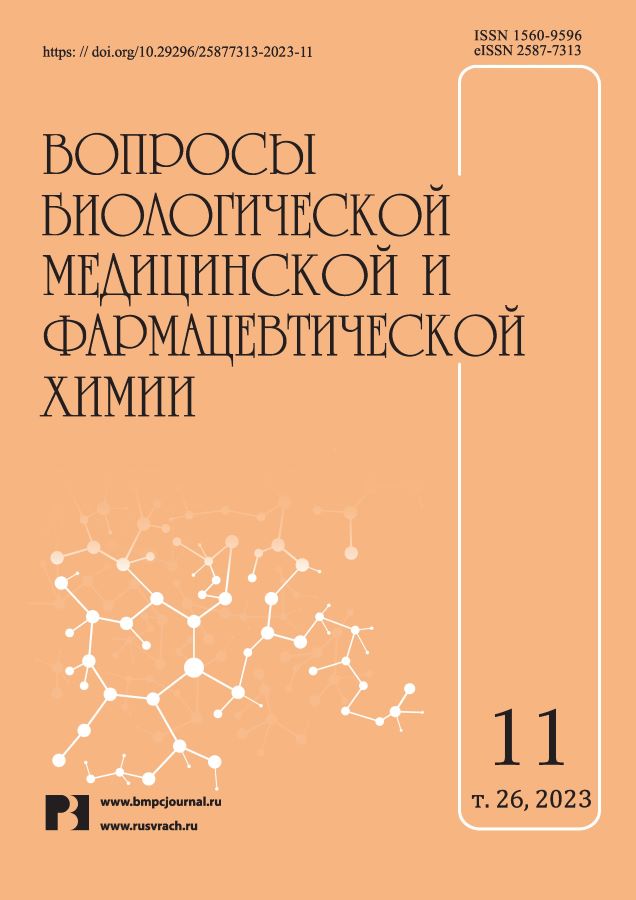Development of approaches to the analysis of elemental impurities in titanium dioxide (arsenic definition)
- Authors: Paskar I.V.1, Senchenko S.P.1, Kapiturova O.A.1, Borkovskaya E.V.1, Troshin V.A.1, Paskar N.G.2
-
Affiliations:
- LLC Test Centre «FARMOBORONA»
- I.M. Sechenov First Moscow State Medical University (Sechenov University) Ministry of Health of the Russian Federation
- Issue: Vol 26, No 11 (2023)
- Pages: 19-26
- Section: Pharmaceutical chemistry
- URL: https://journals.eco-vector.com/1560-9596/article/view/623559
- DOI: https://doi.org/10.29296/25877313-2023-11-04
- ID: 623559
Cite item
Abstract
Relevance. Titanium dioxide plays an important role at all stages of the drug’s life cycle: from protecting active ingredients to improving the quality of care for patients when taking the drug. Despite the ongoing debate about its safe use, it remains one of the most sought-after adjuvants in the pharmaceutical industry today. An important factor in the safety of any component of the drug is the control of its content of elemental impurities. Since for titanium dioxide the pharmaceutical requirements for the content of elemental impurities differ significantly, it was advisable to develop approaches to their definition under the most stringent regulations.
Research objective. This work is devoted to the development of approaches to the analysis and further validation of the method of determination of arsenic in the substance titanium dioxide at the level of 1 ppm.
Material and methods. The basis of the used method was the conditions of the monograph USP «Titanium Dioxide», where a solution of silver diethyldithiocarbatum is used as an arsenic reagent. All the reagents and materials used were pharmacopoeic. A sample of titanium dioxide, produced by Venator Germany GmbH, Germany, was used as the research object. The validation of the methodology was carried out in accordance with the requirements of the State Pharmacopoeia of the Russian Federation on the following characteristics: specificity, linearity, LOQ, correctness, repeatability, intralaboratory precision and range of the technique.
Results. The application of the technique using diethyldithiocarbamate silver as reagent to determine arsenic at 1 ppm is shown. At the same time, the validation evaluation of the methodology showed that the obtained results met the criteria of acceptability for all the studied characteristics.
Conclusions. Due to its properties, the substance titanium dioxide remains in demand in the pharmaceutical industry as a adjuvant. In this case, one of the factors of its safe use is the control of its content of elemental impurities.
Due to the wide variety of pharmacopoeic requirements for the content of elemental impurities in the substance titanium dioxide. This study demonstrated the applicability of the technique using diethyldithiocarbamate silver as a reagent to determine arsenic at the most stringent of its standards (1 ppm). The validation of the technique proved that it was possible to quantify the arsenic content of titanium dioxide in the range from 50% (LOQ) to 150% of the specification level.
Full Text
About the authors
I. V. Paskar
LLC Test Centre «FARMOBORONA»
Author for correspondence.
Email: paskar_irina@farmoborona.ru
Ph.D. (Pharm.), Managing Director
Russian Federation, KorolevS. P. Senchenko
LLC Test Centre «FARMOBORONA»
Email: senchenko_sergey@farmoborona.ru
Dr.Sc. (Pharm.), Associate Professor, Head of Department of Analytical Methods Development
Russian Federation, KorolevO. A. Kapiturova
LLC Test Centre «FARMOBORONA»
Email: kapiturova_olga@farmoborona.ru
Head of the Analytical Laboratory
Russian Federation, KorolevE. V. Borkovskaya
LLC Test Centre «FARMOBORONA»
Email: borkovskaya_evgeniya@farmoborona.ru
Ph.D. (Chem.), Chemist of Department of Analytical Methods Development
Russian Federation, KorolevV. A. Troshin
LLC Test Centre «FARMOBORONA»
Email: paskar_irina@farmoborona.ru
Pharmacist of Department of Analytical Methods Development
Russian Federation, KorolevN. G. Paskar
I.M. Sechenov First Moscow State Medical University (Sechenov University) Ministry of Health of the Russian Federation
Email: paskar_irina@farmoborona.ru
Student
Russian Federation, MoscowReferences
- Racovita A.D. Titanium Dioxide: Structure, Impact, and Toxicity. Int J Environ Res Public Health. 2022 May 6; 19(9): 5681.
- Blundell R., Butterworth P., Charlier A., et al. The Role of Titanium Dioxide (E171) and the Requirements for Replacement Materials in Oral Solid Dosage Forms: An IQ Consortium Working Group Review. J Pharm Sci. 2022; 111(11): 2943–2954.
- The essential role of titanium dioxide in pharmaceuticals; https://www.tdma.info/uses-of-titanium-dioxide/the-essential-role-of-titanium-dioxide-in-pharmaceuticals/.
- Final feedback from European Medicine Agency (EMA) to the EU Commission request to evaluate the impact of the removal of titanium dioxide from the list of authorised food additives on medicinal products. European Medicines Agency, 8 September 2021.
- Commission Regulation (EU) 2022/63 of 14 January 2022 amending Annexes II and III to Regulation (EC) No 1333/2008 of the European Parliament and of the Council as regards the food additive titanium dioxide (E 171) (Text with EEA relevance). European Commission, 14 January 2022.
- Re-evaluation, «Questions & Answers on titanium dioxide.» European Commission, 2022.
- ГФ РФ ОФС.1.10040 «Элементные примеси» (GF RF OFS.1.10040 «Jelementnye primesi»).
- EP 10.5 «TITANIUM DIOXIDE» (07/2021:0150).
- EP 11.2 «TITANIUM DIOXIDE» (07/2023:0150).
- USP–NF 2022 «Titanium Dioxide».
- BP 2020 «Titanium Dioxide» (11-1154, V-A152).
- JP XVII Titanium Oxide.
- EP 10.8. 2.4.20 «DETERMINATION OF ELEMENTAL IMPURITIES» (07/2018:20420 corrected 9.6).
- Huang, Chaozhang, Bin Hu, Zu-cheng Jiang. Simultaneous speciation of inorganic arsenic and antimony in natural waters by dimercaptosuccinic acid modified mesoporous titanium dioxide micro-column on-line separation and inductively coupled plasma optical emission spectrometry determination». Spectrochimica Acta Part B: Atomic Spectroscopy. 2007; 62: 454–460.
- Xiao Y., Ling J., Qian S., et al. Preconcentration of trace arsenite and arsenate with titanium dioxide nanoparticles and subsequent determination by silver diethyldithiocarbamate spectrophotometric method. Water Environ Res. 2007 Sep;79(9): 1015–1022.
- Hagarová I., Matúš P., Bujdoš M., Kubová J. Analytical application of nano-sized titanium dioxide for the determination of trace inorganic antimony in natural waters. Acta chimica Slovenica 2012; 59(1): 102–108.
- ГФ РФ ОФС.1.2.2.2.0004.15 «Мышьяк» (GF RF OFS.1.2.2.2.0004.15 «Mysh'jak»).
- USP-NF, 2021, <211> ARSENIC.
- EP 10.8. 2.4.2. ARSENIC.
- JP XVII 1.11 Arsenic Limit Test.
- Аналитическая химия мышьяка. М.: Наука. 1976. 244 с. (Analiticheskaya himiya mysh'yaka. M.: Nauka. 1976.
- s.).
- ГФ РФ ОФС.1.3.0001.15 «Реактивы. Индикаторы» (GF RF OFS.1.3.0001.15 «Reaktivy. Indikatory»).
- ГФ РФ ОФС.1.1.0012.15 «Валидация аналитических методик» (GF RF OFS.1.1.0012.15 «Validacija analiticheskih metodik»).
Supplementary files









